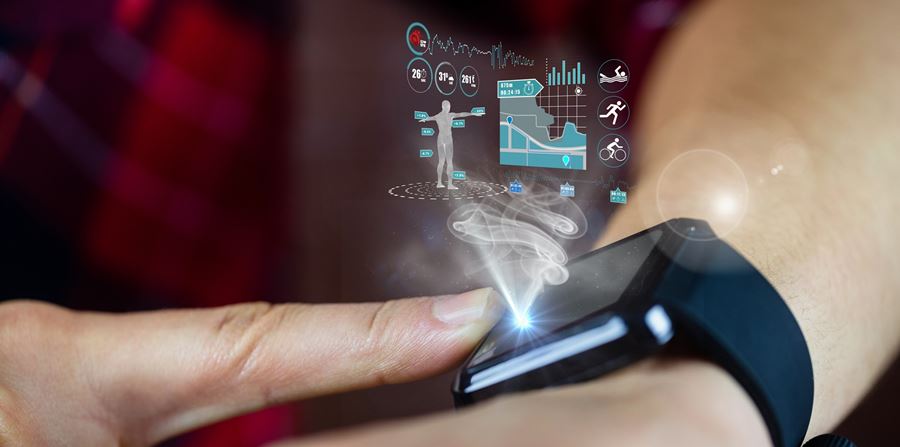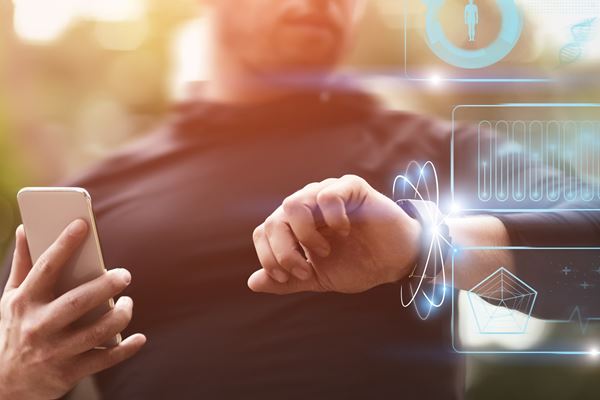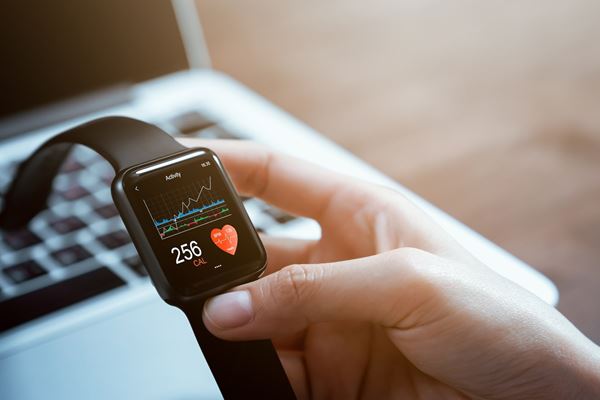Fitness Wearables as Digital Evidence: Exploring the Intersection of Health and Investigation

In today's modern world, fitness wearables are a valuable tool for anyone wanting to improve their performance and well-being and monitor their physical activity by offering a range of benefits. The technology behind these devices is rapidly advancing, with sophisticated sensors that can track various biometrics, such as heart rate, sleep cycles, body temperature, respiration, and more. All this information can be used to reveal actionable insights into our health and well-being, helping us better understand how we're performing when exercising and over time.
The increased popularity and sophistication of fitness trackers increase their value as a potential source of digital evidence in many types of investigations, as these devices can provide forensic artifacts of when and where something happened with surprising detail. For example, in a personal injury case, data from wearable technology might show whether a person was engaged in an activity that contributed to their injury, or it could be used to refute an alibi based on recorded and recovered location data.
In some cases, fitness wearables might even be able to detect when an accident is about to happen and send an alert to the user or emergency contacts. Many of these devices already record medical events. This type of data could inform investigators of a motor carrier accident in that the driver was not distracted by their phone but suffered a medical event, like a stroke.
The data that is collected by fitness wearables can be divided into two main categories. The first is biometric data, data derived from the physical characteristics and behavioral traits of an individual. Second is location data, as fitness wearables utilize built-in location tracking technology, like GPS tracking, and often compile that data with location data from the mobile phone associated with the fitness wearable.
Fitness Wearables and Digital Evidence: Biometric and Location Data
Biometric Data
Fitness wearables can monitor various biometrics, such as heart rate and calorie burn, providing real-time health monitoring and actionable insights into a person's physical activity. This data can be used in legal proceedings as evidence to support claims of health changes or inconsistencies. When supported by other evidence, such as medical reports or expert testimony, biometric data can create a more accurate depiction of what occurred. Utilizing digital forensic experts to collect the data in a way that protects it from spoliation and providing that data to the appropriate subject matter expert in a usable format is becoming more common. For example, an expert in digital forensics could collect the data from a fitness wearable device and then provide the heart rate monitoring data to a cardiologist who can give an expert opinion.
Biometric data from fitness wearables can be used in fraud investigations in several ways. For example, comparing the data collected from the activity tracking of a claimant's declared daily activity with their actual activity as recorded by their wearable device. This helps insurers to detect fraudulent claims that involve physical activities which contradict declared levels of activity. Furthermore, biometrics, such as heart rate and galvanic skin response (GSR, a measuring technique for the electrical conductance of the skin used to measure stress and anxiety levels), can be compared against declared levels of stress or anxiety, allowing for the detection of false claims for physical and psychological injuries.
Location Data
Location data, such as timestamps, speed, and movement patterns, can all be used in conjunction with other evidence to establish a stronger case narrative. Location data recorded by wearable technology can provide forensically reliable evidence useful for litigation. This data can be used to corroborate alibis, prove the presence or absence of a person at a scene, or refute the veracity of an individual's testimony.
If a claimant has stated that they are not physically active but then their fitness wearable shows regular running activity, this could indicate fraud. As an example, an insurance company's Special Investigation Unit (SIU) reached out to Envista’s digital forensics experts with suspicions that the claimant was being dishonest about a specific incident, and what we uncovered proved their doubts correct. Despite the claimant insisting they had stayed in one place all night, data from their fitness wearable revealed them having traveled nearly six miles over the period in question.
Maximizing Data Recovery and Data Analysis from Fitness Wearables
This talk of location and biometric data is important to note, but it begs the questions, “how do I get my hands on this data?” and “what about deleted data?”
Fitness wearables collect data from their users regarding their activity levels, location, and other metrics. This data is stored on the device's internal memory and then transmitted to data repositories, such as online accounts and mobile phone applications. This means that even if the device is damaged, deleted data can still be recovered from the cloud, the mobile phone associated with the device, or the fitness wearable itself by utilizing digital forensic techniques, such as chip-off forensics and forensic extractions.
Even if the device is operational and without damage, there can be deleted data residing in storage areas on the wearable or mobile device associated with it. In other words, a digital forensic expert can utilize specialized forensic hardware and software to recover data that has been "lost" in the normal operation of the device or deleted intentionally or unintentionally by the claimant.
The Future of Lifestyle Analysis with Fitness Wearables
As we have seen, location and biometric data collected from fitness wearables are not limited to physical activity alone. They provide vital insight into many other aspects of health, such as heart rate variability (HRV), caloric intake/burn rate, and more. They can even track a person's sleep patterns, providing insights into sleep quality, duration, and other metrics that can be used to assess overall health and well-being. It is common for a user to have months’ or years’ worth of data recorded by fitness wearables existing in their online accounts and mobile applications.
The extensive data recorded about a user over long periods make this data of special interest when performing a lifestyle analysis. A lifestyle analysis investigation is a type of investigation which looks at a person's daily activities and habits as evidence. Call detail records (CDRs), a kind of super phone bill, from mobile phones are often used to aid in these investigations, as they can provide useful insights into a person's whereabouts and activities over time. These records are used to link together pieces of evidence and better understand the custodian's behavior and relevant patterns of activity.
Compared to the data collected by fitness wearables, current lifestyle analysis investigations using CDRs alone is rather rudimentary. Fitness wearable data can provide a more detailed picture of an individual’s lifestyle and behavior, and when used in combination with other evidence, provides investigators with even greater insight into the custodian's activities, intentions, and state of mind.
Best Practices and Strategies for Incorporating Fitness Wearables into Investigations
Attorneys and claims professionals should be aware of the potential implications that fitness wearable data can have if used correctly. This type of evidence provides valuable insight into an individual's actions surrounding the event in question. It also has the potential to provide relevant data concerning their state of mind leading up to it.
Digital forensic experts can help ensure that the data collected from fitness trackers and wearable technology devices are collected in a way that protects them from spoliation and can assist in making sense of the data by providing it to an appropriate subject matter expert in a usable format.
As technology advances, fitness wearables will continue to become a larger part of our lives and provide increasingly useful evidence for investigations. The widespread use of these devices means that more individuals are wearing them regularly than ever before, potentially turning small moments into tangible pieces of evidence that could prove crucial to resolving a case.
Our experts are ready to help.


